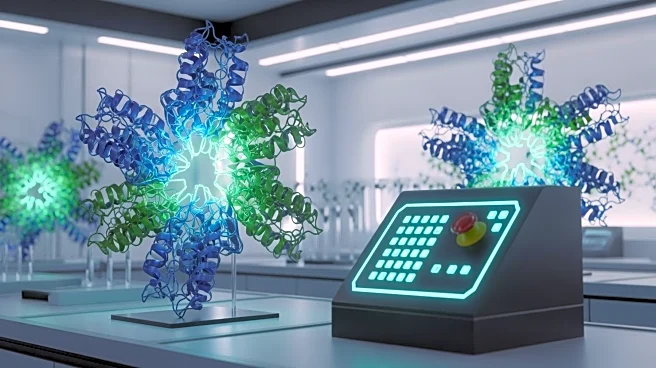What's Happening?
A recent study published in Nature has introduced a new rapid-degradation system combined with super-resolution microscopy to study RNA-binding proteins (RBPs) within nuclear membraneless organelles (MLOs).
These organelles, such as nuclear speckles and paraspeckles, play crucial roles in coordinating the nuclear stress response. The study highlights the development of hGRAD, a plasmid that can be integrated into any cell line, allowing for the rapid degradation of GFP-tagged proteins within two hours. This system aims to overcome the limitations of existing depletion tools that are ineffective for proteins within nuclear MLOs.
Why It's Important?
The development of hGRAD is significant for the field of cellular biology as it provides a method to study the function and architecture of RBPs in nuclear MLOs. These proteins are known for their longevity and abundance, making them challenging to study with traditional methods. By enabling rapid degradation, researchers can better understand the role of specific RBPs in cellular processes, potentially leading to advancements in understanding diseases related to nuclear stress responses and RNA processing.
What's Next?
The introduction of hGRAD could lead to further research into the specific functions of RBPs and their interactions within nuclear MLOs. Researchers may explore the application of this system in various cell lines to study different proteins and their roles in cellular stress responses. This could pave the way for new therapeutic strategies targeting diseases associated with dysfunctional RNA-binding proteins.
Beyond the Headlines
The ethical implications of manipulating cellular processes at such a granular level may raise concerns about the potential for unintended consequences in genetic research. As scientists continue to explore the capabilities of hGRAD, discussions around the responsible use of such technologies in medical and genetic research are likely to emerge.











